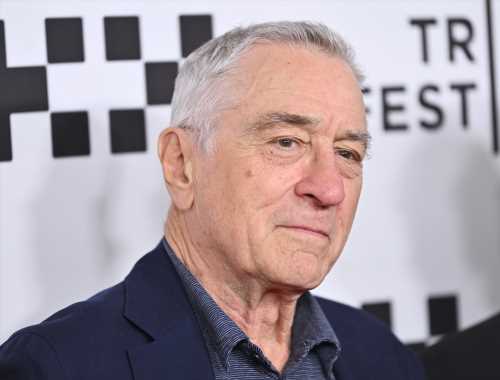
Everyone’s gone to the festivals. But here on the home front, one thing still leads to another.
Last Saturday, I picked up a slightly tattered copy of an old crime biography, Frank Costello: Prime Minister of the Underworld, at one of those sidewalk libraries.
Published in 1974, the year after mob boss Costello died at the age of 82, the book was written by his long-time lawyer George Wolf with co-writer Joseph DiMona.
As lawyer books go, it wasn’t bad. Lots of first-hand anecdotes. Not too much ax-grinding. And a reasonably clear re-telling of an oft-told saga about what they used to call “The Syndicate,” from tawdry roots in New York’s Italian ghettos, through the Italo-Jewish alliance of bootlegging gangs, to political machinations, over-throw of the old Sicilian crime lords, Murder Inc., Bugsy Siegel, Las Vegas, the Kefauver hearings and beyond.
Related Stories

'Barbie' Making Her Home Debut With Digital & PVOD Release Next Week

Watch Her Dance: 'Barbie' Crossing $600M At Domestic Box Office Today
You’ve been there many times in many movies, some good, some less so. The Godfather. Bugsy. Mobsters. Etc.
But what caught my eye was an Amazon delivery notice tucked in the book, with an address in the vicinity of Robert De Niro’s TriBeCa quarters. How it got to Santa Monica, I don’t know. Maybe with the Book Fairy.
Anyway, the slip–and I am in no way suggesting the Wolf book was actually used for a movie whose source material is unknown to me–triggered thoughts about Wise Guys, Barry Levinson’s upcoming film, set for release by Warner Bros., about the conflict between Costello and his arch-rival Vito Genovese.
On the face of it, the film project is an odd one. De Niro plays both lead roles, Costello and Genovese. We’ve seen Eddie Murphy and Peter Sellers pull that sort of stunt, but it’s fairly unusual for a dramatic actor in league with an accomplished director. The notable dramatic actor exception is Tom Hardy’s deft turn as both Reggie and Ron Kray in Brian Helgeland’s 2015 drama Legend. The film is most noteworthy for how Hardy was able to make the brothers feel like distinctively different people; aside from the similar physical appearance that came from being twins, the most common trait between the Kray Brothers was a taste for violence and bloodshed against anyone who dared cross them.
Only a few weeks ago, moreover, the industry news sheet Puck had some fun with a detailed piece about the film’s off-strategy profile, with antique subject matter, aging talent, and, by Puck’s telling, some criss-crossed personal connections in the Hamptons.
That stuff, I leave to those who know better than I.
(And the production’s long back-story, supposedly reaching to the 1970s, doesn’t mean much. Sometimes, a long-and-winding road leads to Barbie. Sometimes, there’s just Cry Macho at the end.)
Yet the Wolf-DiMona book, while not great literature, holds some clues as to why De Niro would put himself at risk with a tricky dual role, and why Levinson and producer Irwin Winkler, with a script by Nicholas Pileggi, would let him.
For starters, the blurb at the top of IMDbPro’s Wise Guys entry has it somewhat wrong. Costello and Genovese weren’t really running “two separate crime families,” as the blurb says. They were, more or less, running the same crime family, inherited from Charles “Lucky” Luciano when Luciano, who had been reigning as “boss of bosses” from Cuba, was forced by pressure from the U. S. government into permanent Italian exile.
Without getting too deeply into “mobology,” not my strong suit, Genovese was muscle, Costello was brains. At least, that’s how Wolf, Costello’s lawyer for thirty years, liked to tell it. They were, not quite the same guy, but two faces of the same phenomenon. Genovese was the family’s ferocious dark side. Costello was its more charming, press-friendly, politician-bribing public face. One ran hot, the other fairly cool. Each had his loyalists within the family. With Luciano gone, they couldn’t co-exist.
And this is where it got interesting, in a cinematic sense. By Wolf’s account, Costello believed that the Genovese wing had his associates Willie Moretti and Albert Anastasia killed. In between, supposedly, Genovese sent underling Vincent Gigante to shoot Costello. But Gigante missed, only creasing Costello’s skull with a bullet. Yet Costello, at Gigante’s trial, insisted that he couldn’t identify him as the shooter, contributing to an acquittal.
In a tactical feint, Costello made public peace with Gigante, even entertaining him as honored guest at a home dinner. More, by Wolf’s account, he probably saved Genovese’s life when both were later in an Atlanta penitentiary.
According to Wolf, fellow prisoners intended to kill Genovese, whom they believed had helped tax authorities to convict Costello. Costello, however, arranged to be photographed at the prison in a friendly pose with Genovese, perhaps reducing the heat.
Why do it? Wolf asked Costello.
“It’s the fact that I’m calling the sitdown,” said Costello. In other words, he cooled the heat on himself with a gesture toward his rival, who had no choice but to let Costello pull back and live out his life in peace.
Maybe it actually happened that way. Certainly, that version could make for a scene as compelling as the Pacino-De Niro sitdown in Heat, but this time with De Niro in both seats.
So let’s just wait, and see how this eccentric movie turns out.
Must Read Stories
WGA Says Several Companies Have “Desire” To Make Deal; AMPTP Calls Claim False
Quentin Tarantino’s Final Movie Snags Big California Tax Credits, Will Shoot In L.A.
‘Conjuring’ Universe Sequel Collects $3.1M In Thursday Previews
Capitol Hill Pols On Labor Dispute & Destructiveness Of A Pyrrhic Victory
Read More About:
Source: Read Full Article



